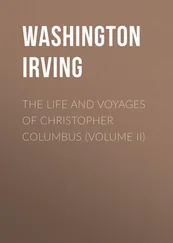Henry Fuseli - The Life and Writings of Henry Fuseli, Volume 2 (of 3)
Здесь есть возможность читать онлайн «Henry Fuseli - The Life and Writings of Henry Fuseli, Volume 2 (of 3)» — ознакомительный отрывок электронной книги совершенно бесплатно, а после прочтения отрывка купить полную версию. В некоторых случаях можно слушать аудио, скачать через торрент в формате fb2 и присутствует краткое содержание. Жанр: visual_arts, foreign_antique, foreign_prose, на английском языке. Описание произведения, (предисловие) а так же отзывы посетителей доступны на портале библиотеки ЛибКат.
- Название:The Life and Writings of Henry Fuseli, Volume 2 (of 3)
- Автор:
- Жанр:
- Год:неизвестен
- ISBN:нет данных
- Рейтинг книги:5 / 5. Голосов: 1
-
Избранное:Добавить в избранное
- Отзывы:
-
Ваша оценка:
- 100
- 1
- 2
- 3
- 4
- 5
The Life and Writings of Henry Fuseli, Volume 2 (of 3): краткое содержание, описание и аннотация
Предлагаем к чтению аннотацию, описание, краткое содержание или предисловие (зависит от того, что написал сам автор книги «The Life and Writings of Henry Fuseli, Volume 2 (of 3)»). Если вы не нашли необходимую информацию о книге — напишите в комментариях, мы постараемся отыскать её.
The Life and Writings of Henry Fuseli, Volume 2 (of 3) — читать онлайн ознакомительный отрывок
Ниже представлен текст книги, разбитый по страницам. Система сохранения места последней прочитанной страницы, позволяет с удобством читать онлайн бесплатно книгу «The Life and Writings of Henry Fuseli, Volume 2 (of 3)», без необходимости каждый раз заново искать на чём Вы остановились. Поставьте закладку, и сможете в любой момент перейти на страницу, на которой закончили чтение.
Интервал:
Закладка:
Конец ознакомительного фрагмента.
Текст предоставлен ООО «ЛитРес».
Прочитайте эту книгу целиком, купив полную легальную версию на ЛитРес.
Безопасно оплатить книгу можно банковской картой Visa, MasterCard, Maestro, со счета мобильного телефона, с платежного терминала, в салоне МТС или Связной, через PayPal, WebMoney, Яндекс.Деньги, QIWI Кошелек, бонусными картами или другим удобным Вам способом.
1
There will be an opportunity to notice that incredible dereliction of reminiscence which prompted him to transfer what he had rightly ascribed to Giorgione, in the Florentine edition, 1550, to the elder Palma in the subsequent ones. See Lecture on Chiaroscuro.
2
It ought not, however, to be disguised, that the history of art, deviating from its real object, has been swelled to a diffuse catalogue of individuals, who, being the nurslings of different schools, or picking something from the real establishers of art, have done little more than repeat or mimic rather than imitate, at second hand, what their masters or predecessors had found in nature, discriminated and applied to art in obedience to its dictates. Without depreciating the merits of that multitude who strenuously passed life in following others, it must be pronounced a task below history to allow them more than a transitory glance; neither novelty nor selection and combination of scattered materials, are entitled to serious attention from him who only investigates the real progress of art, if novelty is proved to have added nothing essential to the system, and selection to have only diluted energy, and by a popular amalgama to have been content with captivating the vulgar. Novelty, without enlarging the circle of fancy, may delight, but is nearer allied to whim than to invention; and an Eclectic system without equality of parts, as it originated in want of comprehension, totters on the brink of mediocrity, sinks art, or splits it into crafts decorated with the specious name of schools, whose members, authorized by prescript, emboldened by dexterity of hand, encouraged by ignorance, or heading a cabal, subsist on mere repetition, with few more legitimate claims to the honours of history than a rhapsodist to those of the poem which he recites.
3
Abstract of the Laws of the Royal Academy, article Professors ; page 21.
4
This has been done in a superior manner by J. G. Herder, in his Ideen zur Philosophie der geschichte der Menschheit , Vol. iii. Book 13; a work translated under the title of Outlines of a Philosophy of the History of Man , 4to.
5
This account is founded on the conjectures of Mr. Riem , in his Treatise on die Malerey der Alten , or the Painting of the Ancients , 4to. Berlin, 1787
6
Pausanias Attic. c. xxviii. The word used by Pausanias καταγραψαι, shows that the figures of Parrhasius were intended for a Bassorelievo. They were in profile. This is the sense of the word Catagrapha in Pliny, xxxv. c. 8, he translates it "obliquas imagines."
7
By the authority chiefly of Pamphilus the master of Apelles, who taught at Sicyon. 'Hujus auctoritate,' says Pliny, xxxv. 10, 'effectum est Sicyone primum, deinde et in tota Græcia, ut pueri ingenui ante omnia diagraphicen , hoc est, picturam in buxo, docerentur,' &c. Harduin , contrary to the common editions, reads indeed, and by the authority, he says, of all the MSS. graphicen , which he translates: ars 'delineandi,' desseigner, but he has not proved that graphice means not more than design; and if he had, what was it that Pamphilus taught? he was not the inventor of what he had been taught himself. He established or rather renewed a particular method of drawing, which contained the rudiments, and facilitated the method of painting.
8
Pausan. Phocica, c. xxv. seq.
9
This I take to be the sense of Μεγεθος here, which distinguished him, according to Ælian, Var. Hist. iv. 3, from Dionysius of Colophon. The word Τελειοις in the same passage: και ἐν τοις τελειοις εἰργαζετο τα ἀθλα, I translate: he aimed at, he sought his praise in the representation of essential proportion ; which leads to ideal beauty.
The κρειττους, χειρους, ὁμοιους; or the βελτιονας ἠ καθ' ἡμας, ἠ και τοιουτους, ἠ χειρονας, of Aristotle, Poetic. c. 2, by which he distinguishes Polygnotus, Dionysius, Pauson, confirms the sense given to the passage of Ælian.
10
Παρειῶν το ἐνερευθες, ὁιαν την Κασσανδραν ἐν τη λεσχη ἐποιησε τοις Δελφοις. Lucian: εἰκονες. This, and what Pausanias tells of the colour of Eurynomus in the same picture, together with the coloured draperies mentioned by Pliny; makes it evident, that the 'simplex color' ascribed by Quintilian to Polygnotus and Aglaophon, implies less a single colour, as some have supposed, than that simplicity always attendant on the infancy of painting, which leaves every colour unmixed and crudely by itself. Indeed the Poecile (ἡ ποικιλη στοα) which obtained its name from his pictures, is alone a sufficient proof of variety of colours.
11
Hic primus species exprimere instituit, Pliny xxxv. 36, as species in the sense Harduin takes it, 'oris et habitus venustas,' cannot be refused to Polygnotus, and the artists immediately preceding Apollodorus, it must mean here the subdivisions of generic form; the classes.
At this period we may with probability fix the invention of local colour, and tone; which, though strictly speaking it be neither the light nor the shade, is regulated by the medium which tinges both. This, Pliny calls 'splendour.' To Apollodorus Plutarch ascribes likewise the invention of tints, the mixtures of colour and the gradations of shade, if I conceive the passage rightly: Ἀπολλοδωρος ὁ Ζωγραφος Ἀνθρωπων πρωτος ἐξευρων φθοραν και ἀποχρωσιν Σκιας, (Plutarch, Bellone an pace Ath., &c. 346.) This was the element of the ancient Ἁρμογη, that imperceptible transition, which, without opacity, confusion, or hardness, united local colour, demitint, shade, and reflexes.
12
'Pinxit et monochromata ex albo.' Pliny, xxxv. 9. This Aristotle, Poet. c. 6, calls λευκογραφειν.
13
In lineis extremis palmam adeptus – minor tamen videtur, sibi comparatus, in mediis corporibus exprimendis. Pliny, xxxv. 10. Here we find the inferiority of the middle parts merely relative to himself. Compared with himself, Parrhasius was not all equal.
14
Theseus, in quo dixit, eundem apud Parrhasium rosa pastum esse, suum vero carne. Plin. xxxv. 11.
15
The epithet which he gave to himself of Ἁβροδιαιτος, the delicate, the elegant, and the epigram he is said to have composed on himself, are known: See Athenæus, l. xii. He wore, says Ælian, Var. Hist. ix. 11. a purple robe and a golden garland; he bore a staff wound round with tendrils of gold, and his sandals were tied to his feet and ankles with golden straps. Of his easy simplicity we may judge from his dialogue with Socrates in Xenophon; ἀπομνημονευατων, 1. iii. Of his libidinous fancy, besides what Pliny says, from his Archigallus, and the Meleager and Atalanta mentioned by Suetonius in Tiberio, c. 44.
Читать дальшеИнтервал:
Закладка:
Похожие книги на «The Life and Writings of Henry Fuseli, Volume 2 (of 3)»
Представляем Вашему вниманию похожие книги на «The Life and Writings of Henry Fuseli, Volume 2 (of 3)» списком для выбора. Мы отобрали схожую по названию и смыслу литературу в надежде предоставить читателям больше вариантов отыскать новые, интересные, ещё непрочитанные произведения.
Обсуждение, отзывы о книге «The Life and Writings of Henry Fuseli, Volume 2 (of 3)» и просто собственные мнения читателей. Оставьте ваши комментарии, напишите, что Вы думаете о произведении, его смысле или главных героях. Укажите что конкретно понравилось, а что нет, и почему Вы так считаете.












